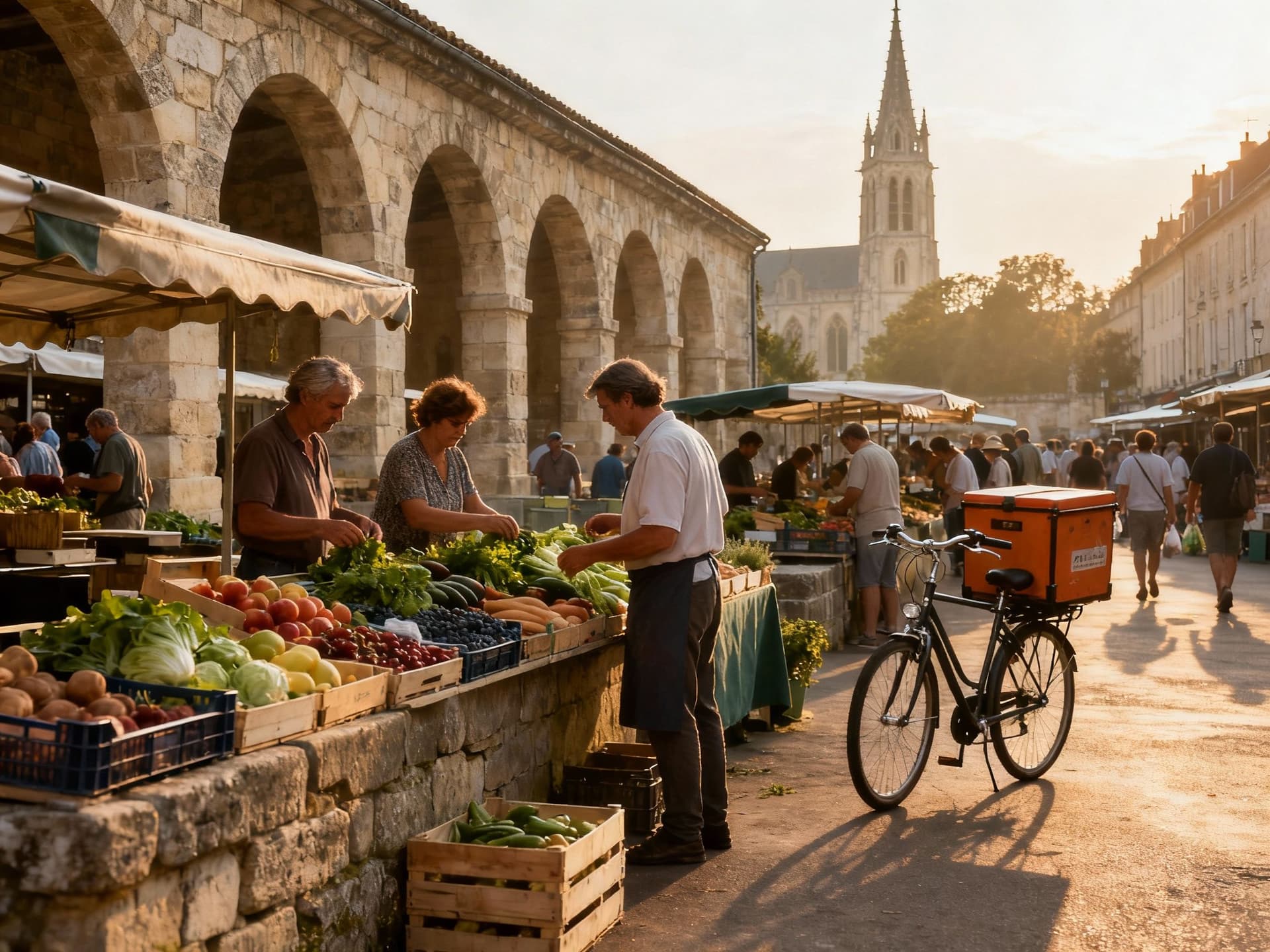France — Price, Yield & Lifestyle: A Tax‑Aware Guide
Pairing sensory scenes of French life with data-led price and yield analysis to help international buyers model net returns, tax impact and realistic rental income.
Imagine sitting at a street-side café in Lyon as a tram rolls by, then checking a portfolio report that shows where your French property actually earns—this is the dual reality of buying in France. The country rewards patience: stable long-term capital growth in coastal and urban hubs, steady rental demand in cities, and complex tax rules that materially affect net yield. For international buyers the question is not whether France enchants, but how much lifestyle costs versus how much return you can realistically extract. This guide pairs sensory snapshots of life here with data-driven price and yield analysis to help you make a disciplined decision.
Living the French Lifestyle

France is many lives at once: Parisian mornings by boulangeries, Mediterranean terraces on the Côte d'Azur, salt-scented Atlantic weekends in Biarritz, and pastoral calm in Dordogne villages. Daily rhythms influence property choice—commuter apartments near a TGV station trade convenience for price per square metre, while provincial houses buy outdoor space and lower maintenance costs. Seasonal flows of locals and tourists shape short-term rental potential and local rules; in summer, demand spikes on the coast while urban markets tighten during the school year. Understanding these rhythms is the first step to matching lifestyle with realistic income expectations.
Neighborhood spotlights: Paris, Aix-en-Provence, Bordeaux
Paris remains a global asset hub: average prices here are among the highest in France and recovered transaction momentum in early 2025, with notable arrondissement-level divergence. Aix-en-Provence and Bordeaux combine good rail links to Paris with lower entry prices and strong second-home demand, benefiting buyers who prioritise capital preservation over immediate yield. Coastal towns like Nice or Saint-Tropez deliver premium rates per square metre but face seasonal volatility; by contrast, university towns (e.g., Rennes, Montpellier) generate the steadier long-let occupancy that supports predictable yields.
Food, markets and weekend life
Weekends are structured around markets, terraces and regional gastronomy; owning property near a marché or lively high street adds both rental appeal and resale value. Local festivals and agricultural seasons create predictable occupancy peaks—helpful when estimating short-term rental revenue. For buyers who value lifestyle, proximity to reliable local services (bakery, pharmacy, rail) often correlates with lower vacancy and higher tenant demand. These everyday conveniences are measurable drivers of net yield when you model expected rent, vacancy and operating costs.
- Lifestyle highlights: weekly markets (Marché des Capucins, Bordeaux), TGV access (Aix, Avignon), coastal walks (Cap d'Antibes), university rental pools (Rennes), vineyard weekends (Bordeaux region).
Making the Move: Practical Considerations

Matching the lifestyle you pictured with a sound investment requires translating local features into financial variables: price per square metre, gross and net yields, taxes, transaction costs, and regulatory constraints. National and local datasets show divergent performance—Paris and the Riviera command premium pricing, while mid-size cities and certain rural departments offer higher yields but slower capital appreciation. Mortgage availability, interest rates and notaire fees (around 7–8% on older stock) add to total cost of acquisition and must be included in cash-on-cash and IRR calculations. Use conservative vacancy and maintenance assumptions when projecting returns.
Property styles and yield implications
Apartments in central urban cores typically show lower gross yields (often 2–3% in prime Paris) but better liquidity and long-term capital growth. Suburban houses and provincial apartments can produce gross yields in the 3.5–6% range depending on location and tenant profile. Furnished short-term rentals can increase gross income but bring higher operating costs, stricter local registration rules, and seasonal volatility. Always calculate net yield: gross rent minus taxes, management, insurance, maintenance, and a conservative allowance for vacancy.
How local experts reduce execution risk
- 1) Translate lifestyle brief into a targeted search area (price band, transport access, tenant type). 2) Validate legal status and permits—short-let registration is mandatory in many coastal and city centres. 3) Obtain local rental comparables and vacancy data to stress-test yield assumptions. 4) Use a French notaire and tax advisor to confirm tax treatment, withholding, and IFI exposure.
Insider Knowledge: What Expats Wish They'd Known
Experienced expats emphasise three surprises: local rules that constrain short-term lets, the weight of transaction and holding taxes on net returns, and the importance of timing purchases around interest-rate cycles. Recent 2025 reporting shows the French market regained momentum as financing costs eased, but regional outcomes diverge—price increases resumed in Île-de-France while some peripheral areas lagged. Non-resident tax treatment is predictable but detailed: rental income, capital gains and the IFI can materially affect after-tax yield and should be modelled explicitly before bidding.
Cultural integration and daily life
Learning practical French and understanding local rhythms pays off: landlords who communicate in French secure longer-term tenants and smoother tenancy renewals. Community engagement—neighbourhood marchés, municipal events, school networks—builds goodwill that can ease property management and reduce turnover. Expect a different pace: administrative processes are formal and sometimes slow, so build extra time into closings and permits. These cultural factors reduce operational friction and therefore improve realised returns.
Long-term lifestyle and investment considerations
Plan for a multi-year horizon: capital appreciation in France tends to be steady rather than explosive, so yields and tax efficiency drive total returns. Wealth tax (IFI) thresholds and capital gains rules affect large portfolios; include potential IFI liability if aggregate French property exceeds €1.3m. For rental strategy, favour long-lets in university towns or professional hubs for lower management costs and predictable net yields; reserve short-lets for coastal or tourist-centred properties where regulation and seasonal risk are acceptable.
- Practical next steps for international buyers: • Run a net yield model including taxes (income tax, social charges), management fees and vacancy. • Confirm short-let registration and municipal restrictions before pricing income assumptions. • Engage a notaire and independent tax adviser to quantify transaction costs and IFI exposure. • Consider mortgage scenarios and FX hedging for interest-rate and currency risk.
France offers a layered proposition: rich daily life, predictable capital retention in core locations, and variable yields that reward careful location selection and tax-aware structuring. Start with lifestyle priorities, then reverse-engineer the yield model—only then make an offer. If you want an evidence-led plan matched to your income objectives, commission local rental comps, a tax memo and a costed renovation estimate before committing. That disciplined sequence preserves the romance of living in France while protecting your returns.
British expat who moved to the Algarve in 2014. Specializes in portfolio-focused analysis, yields, and tax planning for UK buyers investing abroad.


